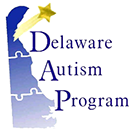Delivering services that are important and effective
People on the spectrum may need many different services from many different people and agencies, that may be very specialized, expensive, or difficult to access, and that change with development. How do you determine what is important and effective?
I help agencies to determine what practices and services are important and effective: setting priorities using the latest policy and evidence-based practices, drawing from model programs, building cross-domain networks and cross-disciplinary models of care, and focusing on outcomes that improve quality of life by considering the unique needs and challenges faced by parents.
I then help agencies how best to deliver these services; how to organize the delivery of services, and how to identify qualified people to deliver these services. Other similar kinds of support includes helping you to improve training and leadership. Examples of services I have helped to develop are listed below.
Examples
ASD Identification
Effective treatment begins with early screening and diagnosis.
Screening: As a follow-up to a bilingual program of training in the use and interpretation of the Checklist for Autism in Toddlers by community based practitioners, I provided follow-up screening and diagnostic assessments. I also developed and implemented a program using trainees from a variety of disciplines to incorporate ASD screening for into a volunteer program in homeless shelters.
Diagnosis: Over a 5 year period, I provided diagnostic and treatment services and acted as the team leader for a bilingual, multidisciplinary program for preschoolers with ASD in a regional psychiatric hospital. This was integrated into a state-funded program of research in early markers of ASD.
Educational classification: I was involved in leading several hundred multidisciplinary assessments for the purpose of the educational classification of ASD while leading a statewide public school program for students with autism.
Behavior Support
Problem behavior is the single factor most likely to lead to placement in specialized, expensive, and restrictive programs.
In hospitals: I was responsible for day-to-day clinical oversight of an in-patient treatment program for young people on the autism spectrum in behavioral crisis.
In schools: I provided oversight for behavior support across the a statewide public school program for students with autism, including a unique system of independent peer review that contributed to extremely low rates of in-patient hospitalization or residential placement.
Crisis management: I provided oversight to improve the appropriate use of seclusion and physical restraint in a statewide public school program for students with autism, contributing to extremely low rates of in-patient hospitalization or residential placement. I was also responsible for minimizing the use of seclusion and physical restraint in an in-patient treatment program for young people on the autism spectrum in behavioral crisis .
Comprehensive Planning
Success requires matching a broad set of goals to powerful methods, delivered by a team with a a shared vision shaped with advocates.
Comprehensive programs: I provided oversight to the principal site of a statewide public school program (with more than 200 staff serving more than 300 students) during much of my 9-year tenure as Statewide Director, and was responsible for responding to any concerns raised across the state regarding the program or placement of students with ASD.
Extended supports for quality of life: I provided day-to-day oversight of programs of Extended Educational Services (including IEP-team discussion, case presentations to state agencies, and programs of training to EES staff), and Extended Support Services (in-home respite). These remain only public school program in the USA to offer such services utilizing its own staff.
Coordinated care: I have led multidisciplinary teams in school (Delaware) and hospital (Pennsylvania & Quebec) settings.
Transition planning: I designed a comprehensive two year, college transition program for youths on the spectrum that addressed employment, community engagement, independent living, and continuing education, and that introduced innovations in delivering services (like ways to incubate new programs for services for partner agencies).
![]() LEND ASD Training
LEND ASD Training
Developing and delivering a multidisplinary ASD training program
 ASD Identification
ASD Identification
Developing and implementing a research-based protocol for ASD identification across the state.
![]() ASD In-Patient Program
ASD In-Patient Program
Intense treatment for children in severe behavioral crisis
 Behavior Support
Behavior Support
Revising standards of practice and oversight coordinated with independent peer review.
![]() ASD In-Patient Program
ASD In-Patient Program
Intense treatment for children in severe behavioral crisis
 Student Safety
Student Safety
Appropriate use of seclusion and restraint, complying with stringent standards
 Overall Growth
Overall Growth
Supporting the consolidation and growth of a nationally recognized program grounded in ABA.
 Extended Services
Extended Services
Expanding the mandate, functioning, and oversight of respite and residential services.
 Transition Pathways
Transition Pathways
Using collective impact to incubate program development for a proposed college program

